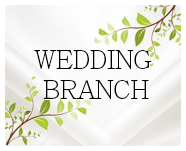- Why Do People Tie Cans to the Back of the Married Couple’s Car?
This tradition actually started during the Tudor period in England. As the bride and groom left in their carriage, wedding guests would throw their shoes at them because it was considered good luck if you hit the vehicle. Today that would be considered wrong, so we tie them to the car instead. And since walking home from a wedding with only one shoe is no fun, people started using tin cans instead.
- Why Is It Bad Luck for the Groom to See His Bride on Their Wedding Day?
This common tradition seems sweet, but its origins aren’t exactly tender. For hundreds of years, fathers arranged their daughter’s marriages by offering money to young men. However, if Daddy’s little girl wasn’t that desirable, Daddy might decide to search for prospective grooms in nearby towns, for obvious reasons. When these men showed up on the wedding day—not having seen their future brides before—it was common for some of them to flee the scene. So the tradition that it’s “bad luck” for a man to see his bride before the ceremony really started out as insurance for her dad.
- How Did We Get a “Ring Finger”?
The ring finger is not the same for everyone. In some parts of India, wedding rings are worn on the thumb. In 3rd-century Greece, the ring finger was the index finger. But later, the Greeks believed that the third finger on a person’s hand was connected directly to the heart by a route called “the vein of love.” Today’s Western tradition stems from that.














